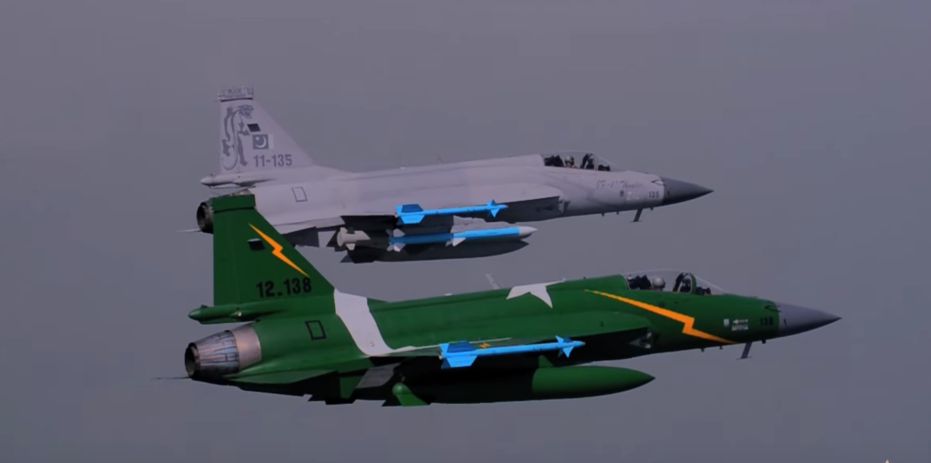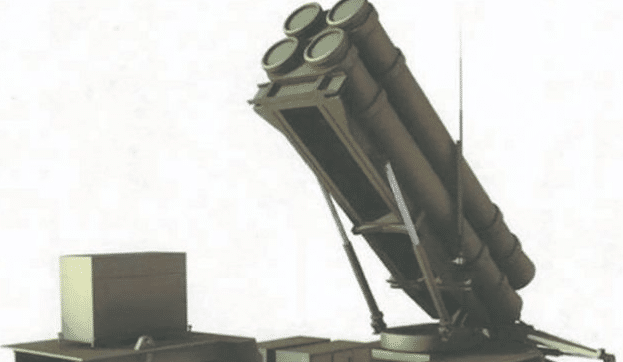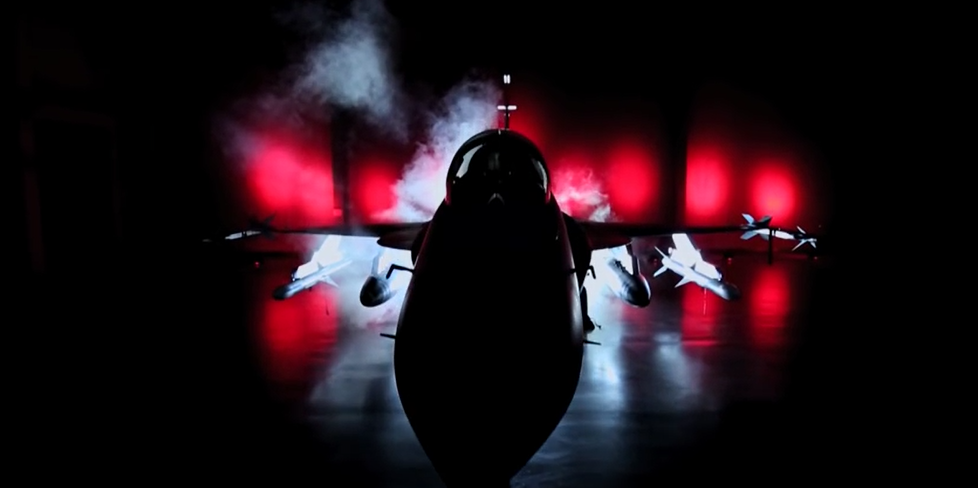29Views 159Comments

Pakistan looks to market the JF-17 Thunder to Morocco
By Bilal Khan
Pakistan Aeronautical Complex (PAC) will be attending the 2016 International Marrakesh Air Show, which is scheduled to take place from Wednesday, April 27th. Having reportedly secured the sale of three JF-17s to the Nigerian Air Force, PAC will be eager to use the International Marrakesh Air Show as a platform to acquire another customer in Africa, potentially the Royal Moroccan Air Force (RMAF).
The JF-17 is a lightweight multi-role fighter principally designed to meet the requirements of the Pakistan Air Force (PAF) – i.e. to phase out antiquated fighter aircraft such as the F-7P as well as to diffuse modern air-to-air and air-to-ground combat capabilities across the entire PAF fighter fleet.
With its emphasis on low-cost acquisition, affordable maintenance, and flexible customization, the JF-17 has been marketed as a potential replacement for MiG-21, F-5 Tiger II, Mirage III/5, F-7 and other legacy fighters in air forces around the world, particularly those belonging to developing countries.
Although one or two orders were secured, PAC has had some difficulty generating leads and converting them into sales. In recent months, controversy erupted when a prospective sale to Sri Lanka was basically shut down, mainly as a result of diplomatic pressure from India. Whether this prospect is revived or not is unclear at best, and no longer possible, at worst. Pursuing other avenues, such as Morocco, could prove to be even more difficult, though not necessarily impossible.
As a general point, arms sales are rarely a purely commercial endeavour. The transfer of weapons is in significant part politically driven, perhaps by the influence exerted by powerful states over weaker ones, or the financial and/or economic benefits afforded by some vendors in comparison to others.
In fact, even Pakistan (a vendor of the JF-17) is not immune to this reality. Between two comparable options, Pakistan will usually be tilted towards the vendor that can offer flexible financing arrangements. Such avenues are rarely given, especially since the seller has to absorb risk by issuing the loan or credit, especially on a frequent and consistent basis. At present, the only country to offer such support to Pakistan is China, which has numerous geo-strategic and political interests to maintain in South Asia.
If this is the case in Pakistan, then one can imagine how it would be in many other developing countries, especially those seeking to build stronger defence ties with the West, particularly the U.S. As a result, the JF-17’s market is a specific kind of market, the kind that – like Pakistan – is unable to readily secure arms from the West, either as a result of tenuous political relationships, or economic inability, or both. While a case could always be made on technical or cost grounds, it is imperative that one remains aware of the political reality, especially in the context of the sale of big-ticket weapons, such as fighter aircraft.
In regards to Morocco, PAC will probably push the JF-17 as a potential replacement for the RMAF’s ageing Mirage F-1 (MF2000), F-5E/F Tiger II and Alpha Jets. But unlike many air forces still using legacy fighters, Morocco issued impressive upgrade programs for its old jets, bringing them on-par in many respects to modern day multi-role fighters. The F-5E/F Tiger II and the Mirage F-1s boast directly comparable (and in some respects superior) on-board electronics suites and air-to-air/air-to-surface munitions inventories as the JF-17 Block-I and Block-II. In the best case scenario, the RMAF could easily come to the conclusion that the JF-17 Block-II does not offer a substantive enough jump over its existing platforms to justify its inclusion.
In other words, the bar to secure Morocco as a customer is quite a ways higher than say Sri Lanka or Nigeria. For PAC, the key would be in emphasizing the value proposition of the forthcoming JF-17 Block-III, especially since it will be equipped with an active-electronically scanned array (AESA) radar, helmet-mounted display and sight (HMD/S) system, a fifth-generation high off-boresight (HOBS) within-visual-range air-to-air missile (WVRAAM), and potentially infrared search and track (IRST).
Granted, the JF-17 Block-III is years away, but given the quality of the RMAF’s Mirage F-1 and Tiger II fleet, it is not in a hurry, and it will be keeping its eye open for advanced Western platforms as well. In this scenario, building a working relationship with Finmeccanica will be key for PAC, especially since it will be prudent for it to offer a variation of the JF-17 Block-III that closely ties with the RMAF’s evident preference for Western equipment. In the interim, a twin-seat JF-17 Block-II could prove to be an attractive option to replace the RMAF’s Alpha Jet Es, especially in the advanced training and close air support role, but the key will be Block-III, especially from the angle of greatly improving the RMAF’s air warfare capabilities.
Besides Morocco, the International Marrakesh Air Show will be a good opportunity for PAC to assert the JF-17’s value proposition to other prospective buyers in Africa. Of the air forces that do operate fighter aircraft, not many fly contemporary platforms with modern day air-to-air and air-to-surface capabilities. The JF-17 can provide those capabilities at an affordable cost, and with relatively little friction in terms of regulatory or political hurdles, at least compared to potential Western options.
That said, PAC cannot take the market for granted; the JF-17 will also be competing against low-cost very lightweight aircraft such as the Mwari, produced by the South African vendor Paramount Group. Some countries, especially those with limited need for credible air warfare capabilities, may be keen on the idea of low-cost turboprop aircraft that could be used for surveillance and light attack. It will be up to PAC to demonstrate the value of investing in a full-fledged fighter platform instead, and why the JF-17 ought to be that fighter.


